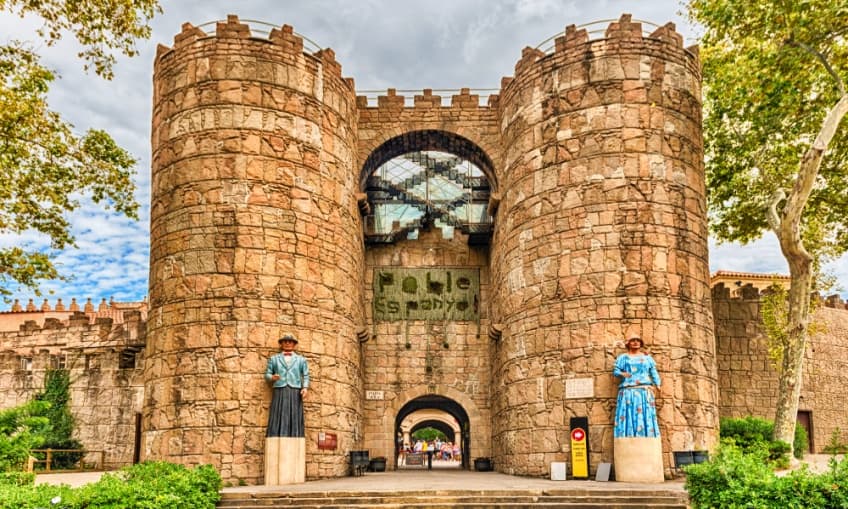
Poble Espanyol Museum (Barcelona)
The Poble Espanyol Museum is located very close to the Magic Fountains of Montjuic and is dedicated to the architecture, contemporary art, gastronomy and crafts of various Spanish towns. It presents impressive life-size reproductions of 117 typical buildings that include streets, avenues, squares, houses, theatres, churches, restaurants and more.
The idea of this singular museum arose during the International Exposition of 1929. It was promoted by the famous Catalan architect Josep Puig i Cadafalch and designed by his colleagues Ramos Reventós and Francesc Folguera and the plastic artists Miguel Utrillo and Xavier Nogués. The purpose was to exalt the idiosyncratic characteristics of each of the towns that make up Spain.
This impressive museum has a total area of more than 48,000 square meters, in which the streets, squares, emblematic buildings, popular monuments, tourist attractions and most representative elements of the main Spanish cities are reproduced to scale.
In the museum, one can find the most representative buildings of the different autonomous communities in Spain, as well as well-known entertainment venues, famous discos, theatres and even one of the most popular flamenco tablaos in Barcelona.
The Poble Espanyol Museum also contains the headquarters of the Fran Daurel Museum, which has one of the most impressive private collections of contemporary art in Barcelona, with almost 300 works by Salvador Dalí, Joan Miró, Pablo Picasso, Antoni Tapies and Josep Guinovart.
The idea of this singular museum arose during the International Exposition of 1929. It was promoted by the famous Catalan architect Josep Puig i Cadafalch and designed by his colleagues Ramos Reventós and Francesc Folguera and the plastic artists Miguel Utrillo and Xavier Nogués. The purpose was to exalt the idiosyncratic characteristics of each of the towns that make up Spain.
This impressive museum has a total area of more than 48,000 square meters, in which the streets, squares, emblematic buildings, popular monuments, tourist attractions and most representative elements of the main Spanish cities are reproduced to scale.
In the museum, one can find the most representative buildings of the different autonomous communities in Spain, as well as well-known entertainment venues, famous discos, theatres and even one of the most popular flamenco tablaos in Barcelona.
The Poble Espanyol Museum also contains the headquarters of the Fran Daurel Museum, which has one of the most impressive private collections of contemporary art in Barcelona, with almost 300 works by Salvador Dalí, Joan Miró, Pablo Picasso, Antoni Tapies and Josep Guinovart.
Location
Museums in Barcelona
Civil Buildings in Barcelona
Religious Buildings in Barcelona









